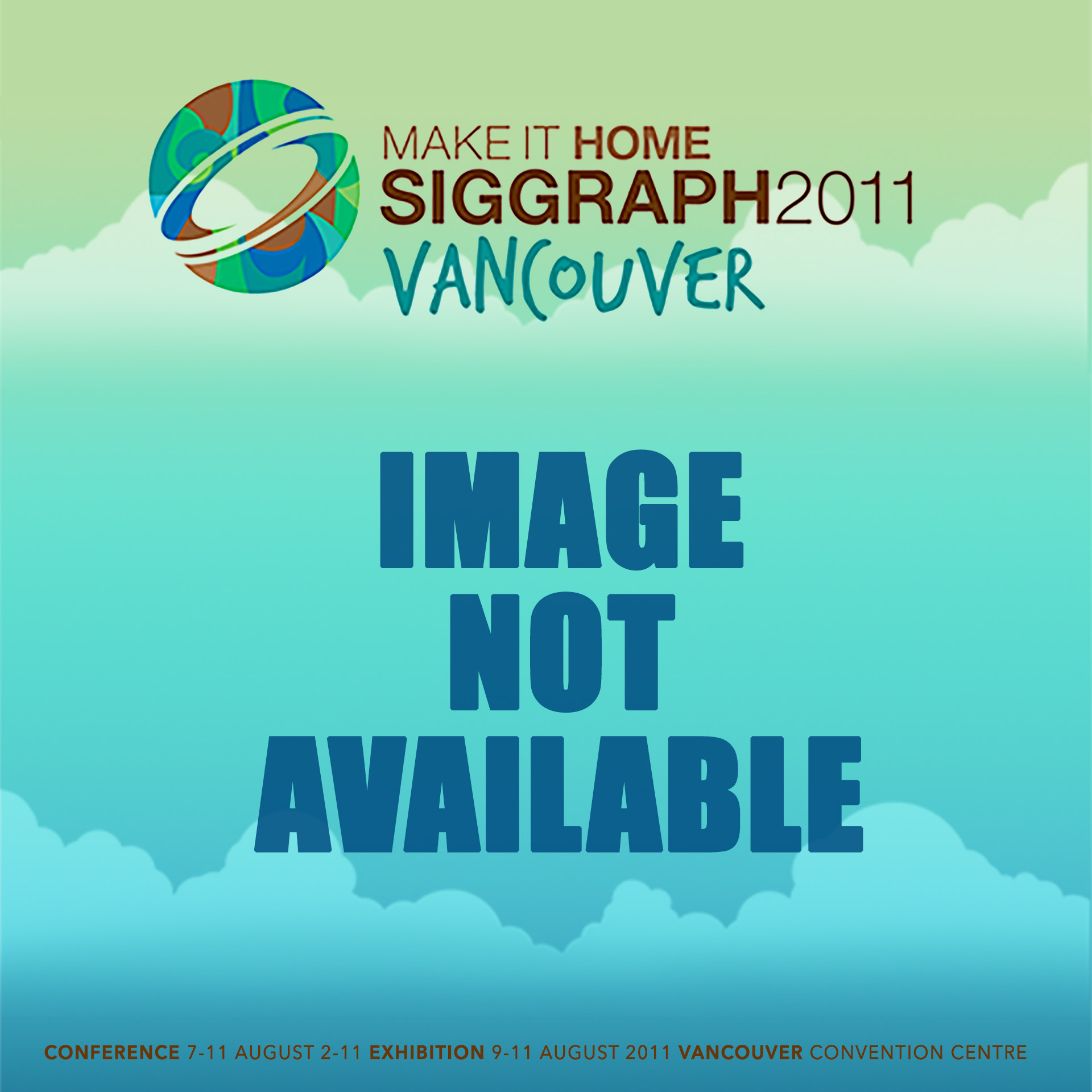“Probabilistic reasoning for assembly-based 3D modeling” by Chaudhuri, Kalogerakis, Guibas and Koltun
Conference:
Type(s):
Title:
- Probabilistic reasoning for assembly-based 3D modeling
Presenter(s)/Author(s):
Abstract:
Assembly-based modeling is a promising approach to broadening the accessibility of 3D modeling. In assembly-based modeling, new models are assembled from shape components extracted from a database. A key challenge in assembly-based modeling is the identification of relevant components to be presented to the user. In this paper, we introduce a probabilistic reasoning approach to this problem. Given a repository of shapes, our approach learns a probabilistic graphical model that encodes semantic and geometric relationships among shape components. The probabilistic model is used to present components that are semantically and stylistically compatible with the 3D model that is being assembled. Our experiments indicate that the probabilistic model increases the relevance of presented components.
References:
1. Chaudhuri, S., and Koltun, V. 2010. Data-driven suggestions for creativity support in 3D modeling. In Proc. SIGGRAPH Asia, ACM. Google Scholar
2. Epic Games. 2011. Unreal Development Kit. http://www.udk.com.Google Scholar
3. Fisher, M., and Hanrahan, P. 2010. Context-based search for 3D models. In Proc. SIGGRAPH Asia, ACM. Google Scholar
4. Frey, B., and MacKay, D. 1997. A revolution: belief propagation in graphs with cycles. In Advances in Neural Information Processing Systems, 479–485. Google Scholar
5. Fung, R. M., and Chang, K.-C. 1990. Weighting and integrating evidence for stochastic simulation in Bayesian networks. In Proc. Conference on Uncertainty in Artificial Intelligence, North-Holland Publishing Co. Google ScholarDigital Library
6. Funkhouser, T., Kazhdan, M., Shilane, P., Min, P., Kiefer, W., Tal, A., Rusinkiewicz, S., and Dobkin, D. 2004. Modeling by example. In Proc. SIGGRAPH, ACM. Google Scholar
7. Golovinskiy, A., and Funkhouser, T. 2009. Consistent segmentation of 3D models. Computers & Graphics 33, 3, 262–269. Google ScholarDigital Library
8. Kalogerakis, E., Hertzmann, A., and Singh, K. 2010. Learning 3D mesh segmentation and labeling. In Proc. SIGGRAPH, ACM. Google Scholar
9. Koller, D., and Friedman, N. 2009. Probabilistic Graphical Models: Principles and Techniques. The MIT Press. Google Scholar
10. Kraevoy, V., Julius, D., and Sheffer, A. 2007. Model composition from interchangeable components. In Proc. Pacific Graphics, IEEE Computer Society. Google Scholar
11. Lee, J., and Funkhouser, T. 2008. Sketch-based search and composition of 3D models. In Proc. Eurographics Workshop on Sketch-Based Interfaces and Modeling. Google Scholar
12. Maxis Software. 2008. Spore. http://www.spore.com.Google Scholar
13. Merrell, P., Schkufza, E., and Koltun, V. 2010. Computer-generated residential building layouts. In Proc. SIGGRAPH Asia, ACM. Google Scholar
14. Mori, G., Belongie, S., and Malik, J. 2001. Shape contexts enable efficient retrieval of similar shapes. In Proc. IEEE Computer Vision and Pattern Recognition, vol. 1, 723–730.Google Scholar
15. Nealen, A., Sorkine, O., Alexa, M., and Cohen-Or, D. 2005. A sketch-based interface for detail-preserving mesh editing. In Proc. SIGGRAPH, ACM. Google Scholar
16. Pearl, J. 1988. Probabilistic Reasoning in Intelligent Systems: Networks of Plausible Inference. Morgan Kaufmann. Google Scholar
17. Podolak, J., Shilane, P., Golovinskiy, A., Rusinkiewicz, S., and Funkhouser, T. 2006. A planar-reflective symmetry transform for 3D shapes. In Proc. SIGGRAPH, ACM. Google Scholar
18. Schmidt, R., and Singh, K. 2010. Drag, drop, and clone: An interactive interface for surface composition. Tech. Rep. CSRG-611, Department of Computer Science, University of Toronto.Google Scholar
19. Schwarz, G. 1978. Estimating the dimension of a model. The Annals of Statistics, 2, 461–464.Google ScholarCross Ref
20. Shapira, L., Shalom, S., Shamir, A., Zhang, R. H., and Cohen-Or, D. 2010. Contextual part analogies in 3D objects. International Journal of Computer Vision 89, 2-3, 309–326. Google ScholarDigital Library
21. Sharf, A., Blumenkrants, M., Shamir, A., and Cohen-Or, D. 2006. SnapPaste: an interactive technique for easy mesh composition. Visual Computer 22, 9, 835–844. Google ScholarDigital Library
22. Shen, C., O’Brien, J. F., and Shewchuk, J. R. 2004. Interpolating and approximating implicit surfaces from polygon soup. In Proc. SIGGRAPH, ACM. Google Scholar
23. Shin, H., and Igarashi, T. 2007. Magic canvas: interactive design of a 3D scene prototype from freehand sketches. In Proc. Graphics Interface. Google Scholar
24. Simari, P., Kalogerakis, E., and Singh, K. 2006. Folding meshes: hierarchical mesh segmentation based on planar symmetry. In Proc. Eurographics Symposium on Geometry Processing. Google ScholarDigital Library
25. Sproull, R. F. 1990. Parts of the frontier are hard to move. Computer Graphics 24, 2, 9.Google Scholar
26. Talton, J. O., Gibson, D., Yang, L., Hanrahan, P., and Koltun, V. 2009. Exploratory modeling with collaborative design spaces. In Proc. SIGGRAPH Asia, ACM. Google Scholar
27. Torralba, A., Murphy, K. P., and Freeman, W. T. 2007. Sharing visual features for multiclass and multiview object detection. IEEE Transactions on Pattern Analysis and Machine Intelligence 29, 5, 854–869. Google ScholarDigital Library
28. Unity Technologies. 2011. Unity. http://unity3d.com.Google Scholar




